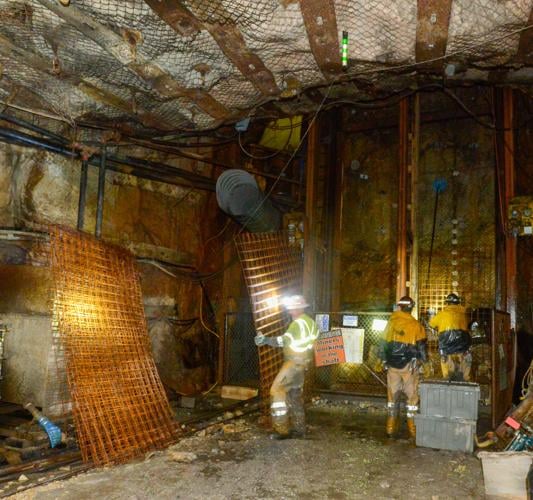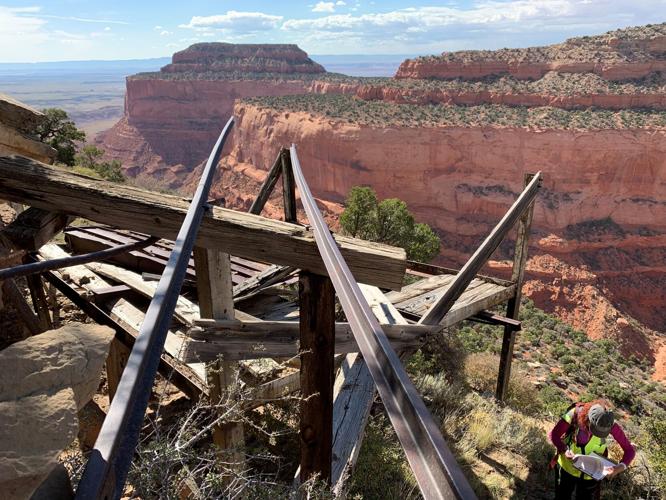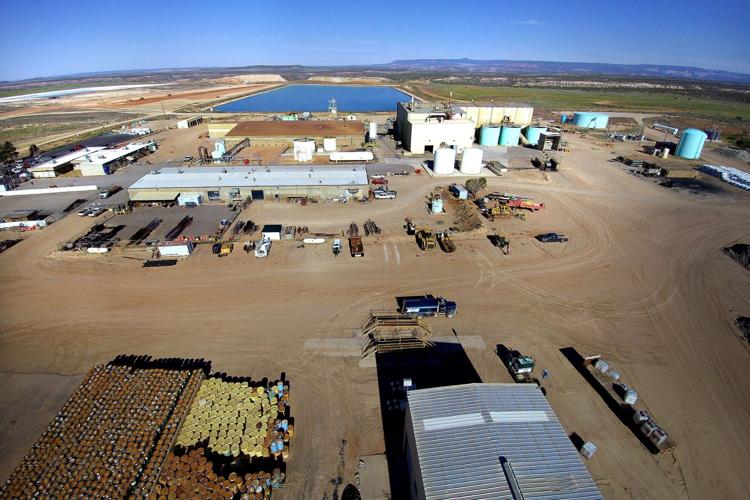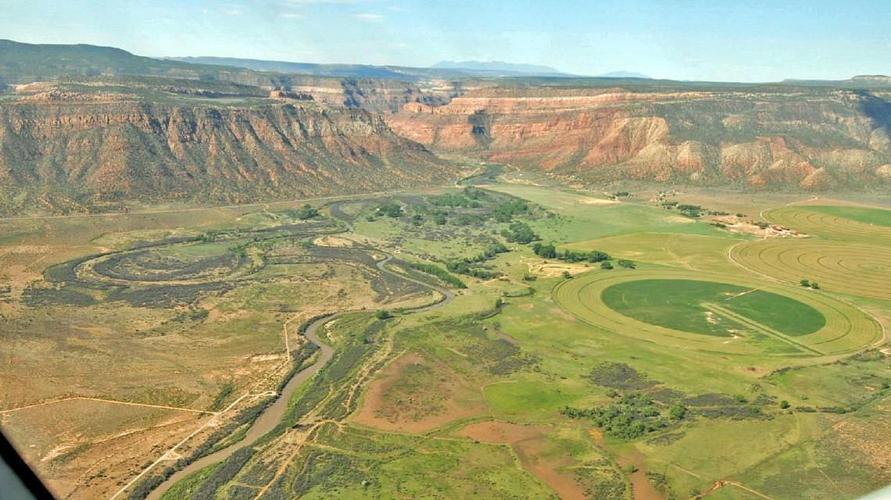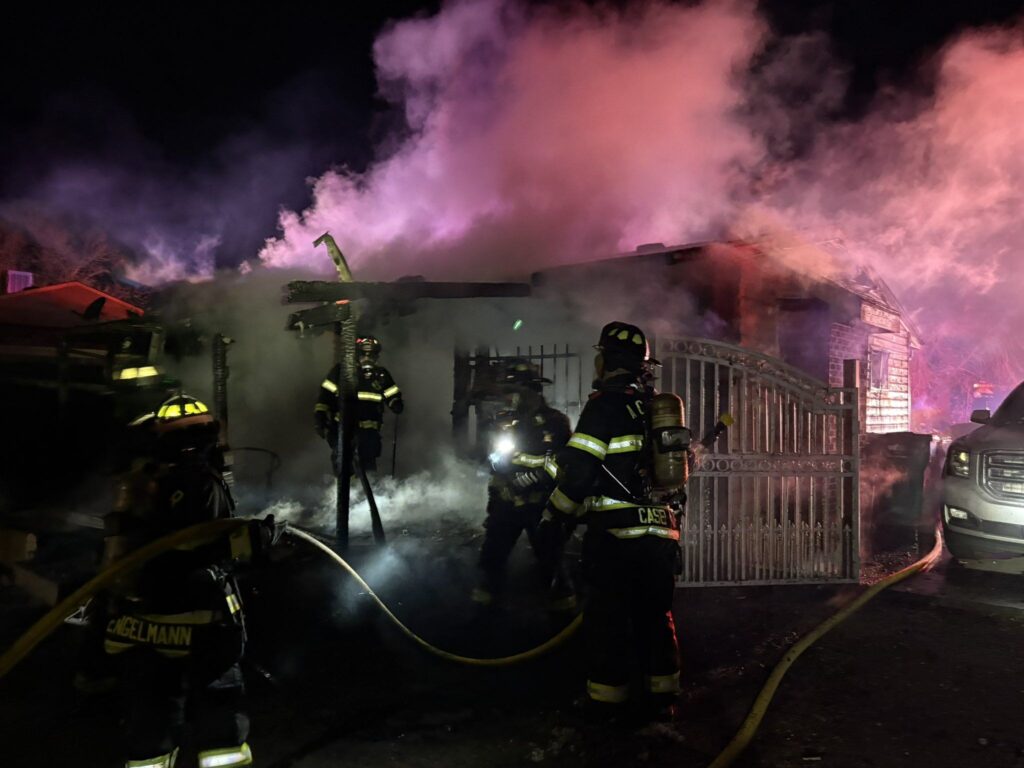Can Colorado better source, produce rare earth minerals? Mining experts weigh in on how
President Donald Trump’s recent policy directives to cut the cord between China and the U.S. for rare earth minerals triggered by China’s retaliatory cut-off of certain critical minerals put a spotlight on the United State’s near-total dependence on China for minerals, products and materials essential to our economy and national defense.
China has created a near-monopoly on the refining of rare earth minerals and production of things like high-power magnets and computer chips that rely on rare earths, according to Ian Lange of the Payne Institute at the Colorado School of Mines.
A recent Common Sense Institute panel discussion, cosponsored by The Denver Gazette, explored the future of mining and energy in Colorado and the West. The Institute (CSI) is a “non-partisan research organization dedicated to protecting and promoting the economy,” according to its website.
The panel included Wyoming Gov. Mark Gordon; Kelly Caufield, executive director of CSI; Caitlin McKennie, CSI research director; Adam Eckman, president and CEO at the Colorado Mining Association; Lynne Granger, president & CEO at the Colorado Oil & Gas Association and Lange, faculty fellow at the Payne Institute at the Colorado School of Mines.
After the public event The Denver Gazette conducted an exclusive interview with Gov. Gordon, Eckman, Lange and Caufield.
Below is the transcript of that conversation. Answers have been edited for length and clarity.
The Denver Gazette: During the panel discussions you talked about mining in Wyoming and Colorado. How do the two states compare in terms of policy and the ability to mine strategic minerals?
Adam Eckman: Well, I guess I could draw on some experience with the National Mining Association when I was an attorney there. Representative companies are doing work in Wyoming and in Colorado, and it’s no secret that Wyoming has a very common-sense, favorable regulatory framework at the state level. I have worked in the federal government, where the state works very closely with the federal government in a collaborative and effective way. Colorado can at times be a challenging environment for the extractive industry. I think a large component of the success of those will be determined by how willing a partner they find in the states that are also a part of that process. We now have counties in Colorado who are taking different approaches to reviewing mining operations and depending on how a county chooses to proceed with a review.
Gov. Mark Gordon: Wyoming has something we call primacy. It allows our state agencies to work with potential permittees, and we have to meet or exceed the federal guidelines, but you’re working with people that you can get ahold of. You’re working with people who will be responsive. It is interesting because I think our two states have very different mineral deposits and opportunities. If you look at any economy moving forward, we’re going to have to take advantage of both. But I do think that the point you just made about how many different jurisdictions are going to be problematic. It’s something that I think we’ll have to figure out how to address, and that should be addressed, I think, at the state level far better than at the federal level.
DG: Dr. Lange, do you want to talk a little bit about the federal government policy and how that affects local policy in Wyoming and Colorado and Utah?
Ian Lange: I’ll just touch on something that hasn’t been brought up so far. Generally mining companies are facing what I tend to think of as a subsidized monopolist. They’re facing Chinese firms that are subsidized by their national government, that in a lot of cases have zero cost of capital. And so, the price that they’re trying to beat is sort of an unfair or a market-manipulated price. Certainly, one of the things at the federal level that they’re trying to do is to provide a stronger legal footing for some sort of trade restriction. The federal government is trying to give some breathing room for an investor, a mining company, and a customer to say, yeah, we see something that we can do here. We’re not facing somebody who is undercutting what we’re doing because they don’t have to pay for capital.
Gordon: You make a really good point, and I’ll give you an example that has been particularly troubling for the nuclear industry. This region of the country, New Mexico, Colorado and Wyoming, had some of the richest uranium deposits. We had conversion facilities; we had enrichment facilities. These were all things that we had in the eighties, and they were essential. Of course, there was sort of a different attitude in those days, and it kind of changed things. Now we realize that nuclear has a big role to play in our future, but lo and behold, Russia dominated Kazakhstan and that industry to the point where we are 20 years behind in conversion, 20 years behind in enrichment.
DG: I talked to one of the mining companies about how we get to rare earth element independence in the United States. He agreed that we need something like a Manhattan Project, because a number of those rare earth elements are only used by the military. They have little commercial value. He opined that $500 million to a billion dollars could get the rare earths system up and running to extract it, to refine it, and to begin making it into products.
Eckman: That sounds great, but we haven’t even gotten our permitting house in order yet. The firms that do want to develop this stuff in the United States — and we have rich deposits here in the Rocky Mountain West — they can’t feasibly get to because we’re dealing with NEPA (National Environmental Policy Act) analyses that duplicate each other time and again. Now, if more intervention is needed on a government level to obtain national defense sensitive minerals, that might be another thing to look at, but we need to take the first step on feasibly permitting these projects in the first place.
Gordon: I think that’s exactly right. You’ve got to get the permitting out of the way. One of the problems with government is — at least we do it now — is we overdo it. So, maybe there are some incentives or things like that that can be helpful, but private markets are going to make it a much more efficient process. We just have to get the permitting to a point where it makes sense, it’s reasonable, isn’t overdone, you don’t have multiple jurisdictions, and you don’t spend all your time and money fighting things in court.
DG: Do you think that the political atmosphere in Colorado is going to be conducive to the kind of efforts that are needed to go back to the mineral extraction that we had in 1980 or 1942? Do you think that’s realistic?
Eckman: I think that is going to take some in-depth conversations, but the end uses of the minerals that we’re talking about today are very different. The mining conversation we’re having today is very different. It’s about national security, it’s about advanced technology, it’s about clean energy and geopolitical factors at play right now that threaten the things everybody in Colorado can agree on. We love aerospace in Colorado. We have a huge aerospace employment hub here, and the aerospace companies are becoming increasingly nervous about relying on an adversarial nation, China, to provide technology. I think that they view that as increasingly untenable. That’s something I think all of us can get on board with. With respect to carbon-free energy, which is the preferred energy of the majority of our elected officials in the state, the bottleneck for bringing that online is more and more becoming mining. It’s mineral access, even more than it is engineering. Engineering is always going to be important, but it’s not that we don’t have enough engineers to figure this out. It’s that we can’t get the minerals or we can’t get them at the price we need to build this out as rapidly as we need, particularly taking into account all the energy that AI and data centers are going to take. And so, I think Colorado really needs to look at its mineral endowment and what it can do to actively participate in its own economy. If we want to supply the industries that we hold dear, let’s mine the minerals to do so.
Kelly Caufield: We are energized by this uranium conversation. That’s why our economists worked together with the researchers at Colorado School of Mines Payne Institute to better understand what the economic impact to Colorado is of even a single mineral mining operation in the Uravan mineral belt. That’s $1.3 billion in state GDP. This is music to our ears. In the most recent jobs report, we had the second slowest of all states in terms of private sector job growth. We’re really good at growing public sector jobs right now, but we’re concerned about the economic competitiveness of Colorado. We are constantly benchmarking ourselves against other states, including Wyoming, Utah and all our regional competitors. There’s more work to do, but we see that as a very strong step forward. It’s not just a hope or a dream, it’s based on data, it’s based on facts. And we thought Coloradans deserve to better understand the economic implications for their state.
DG: The Colorado Energy Office commissioned a study of different plans for reaching its climate goals. In the report, nuclear power was shown to be cheaper than wind, solar and batteries. What does that say about what we’re doing and what we should be doing?
Gordon: It has been interesting to watch the Department of Energy. I hadn’t seen this report, but those data (points) sort of indicate the things that we’ve been talking about here this evening, that there are practical solutions that are cheaper, more effective, and more efficient. But I would also say that so much of the conversation has been emotionally charged, and that’s why I keep coming back to saying if we have an honest discussion about what these options are, that’s the great first step.
Eckman: I agree with that completely. And I would say that not too long ago, nuclear was viewed as far too expensive to be viable. I think findings like that show that that is no longer the case and that we have to look at the power supply capacity of nuclear — which from a mineral input standpoint is really unrivaled. CMA (Colorado Mining Association) supports an all-of-the-above approach, but for Colorado, given our unique political dynamics and our mineral endowment, I think that that really is the best path forward.
Caufield: If you’re referring to the Colorado Energy Office report from a year ago, which showed it would cost a hundred billion dollars to Colorado to build out the infrastructure on the utility side to meet the governor’s 2040 and 2050 Clean energy goals, then I’m happy you’re bringing that up because just in January, the Common Sense Institute studied that report. That’s very expensive for Xcel and all the other utilities to meet just the greenhouse gas goals for the electric sector. So, our economists drilled down — what’s the household cost, the commercial cost, the industrial cost, and the cost per Colorado household? We calculated $9,200 more by 2040 in the aggregate. But when you’re looking at lower middle-income Coloradans, where we already have one of the fastest, highest growing affordability challenges in the country, we are 50th in terms of housing affordability. We think that’s a real issue. We also calculated, I believe, $1 million per industrial business and $60,000 per commercial business in additional electricity costs to meet the roadmap that the state of Colorado has set out. So, we’re happy that nuclear was a part of that, and we did study it to better understand the real-world implications for households. How much do we all have to pay for a grand vision?
Eckman: To Kelly’s point, Colorado coal was the backbone of our grid for decades, and the Greenhouse Gas Roadmap per the CSI report shows how devastating premature retirements of our coal fleet have been. It has been financially a disaster for everybody who pays a utility bill in this state. If we are going to move forward with that, I think nuclear needs to be a major part of the conversation.
Lange: We used to have all the processes to take the dirt and turn it into something you could put in a power plant. There’s one mill left in the United States in Utah, and there’s one conversion facility left in Illinois, I believe. There are no enrichment facilities. There is a demonstration enrichment facility for the type of uranium you would need in the advanced reactors. And so, the supply chain really needs to be built out, I think, for this hope to come to fruition, because it’s just not going to happen with the current supply chain. We used to have a lot more of these. We need them again.






